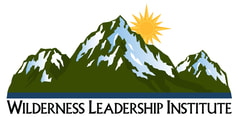
Snowpack Summary January 27, 2022
Posted by Allen Giernet @ 6:00pm (this summary expires in 48 hours)
This summary applies to backcountry areas only.
The Bottom Line –
Freeze thaw conditions continue. Expect to find variable surface conditions. Firm and icy especially in the morning and at higher elevations. Afternoon warming will bring softening especially to South facing sun exposed slopes that still hold snow. Bring tools to prevent slipping and falling and keep wet snow avalanches on your mind if sinking above your ankles in wet south facing snow. At lower elevations and southerly aspects expect to find thin snow and early season hazards where snow remains.
If you venture out please submit your observations to the avalanche center Submit Reports page.
Posted by Allen Giernet @ 6:00pm (this summary expires in 48 hours)
This summary applies to backcountry areas only.
The Bottom Line –
Freeze thaw conditions continue. Expect to find variable surface conditions. Firm and icy especially in the morning and at higher elevations. Afternoon warming will bring softening especially to South facing sun exposed slopes that still hold snow. Bring tools to prevent slipping and falling and keep wet snow avalanches on your mind if sinking above your ankles in wet south facing snow. At lower elevations and southerly aspects expect to find thin snow and early season hazards where snow remains.
If you venture out please submit your observations to the avalanche center Submit Reports page.
Problem #1

Loose Wet avalanches are the release of wet unconsolidated snow or slush. These avalanches typically occur within layers of wet snow near the surface of the snowpack, but they may quickly gouge into lower snowpack layers. Like Loose Dry Avalanches, they start at a point and entrain snow as they move downhill, forming a fan-shaped avalanche. Other names for loose-wet avalanches include point-release avalanches or sluffs. Loose Wet avalanches can trigger slab avalanches that break into deeper snow layers
General Summary Warm days and cold nights have contributed to snow loss on our southern aspects and lower elevations while the overnight freezes are creating fast firm surfaces. Though avalanche danger may not be high at this time this does not mean no avalanche danger. Be prepared for challenging travel due to variable surfaces. This will change significantly with aspect, elevation and time of day. Bring tools to prevent long slip and falls situations and make travel choices to minimize your exposure to out of control sliding hazards. rocks, drop offs or melted out exposed terrain. If you find yourself sinking into soft moist snow several inches especially on steep Southerly aspects change your aspect or travel plans.
Exercise caution on slopes over 30°. Always exercise caution when entering into winter mountain areas. Bring a Beacon Shovel and Probe and know how to use them. Travel with a partner and make conservative decisions.
Exercise caution on slopes over 30°. Always exercise caution when entering into winter mountain areas. Bring a Beacon Shovel and Probe and know how to use them. Travel with a partner and make conservative decisions.
General Mountain Weather Forecast |
1-27-22 Thursday Cold overnight last night with temperatures are slightly warmer than yesterday. Skies will be clear with light to moderate winds increasing this evening. A Wind Advisory will go into effect from 7:00pm this evening to 10:00pm tomorrow.
Friday Clouds will increase as temps warm a bit more with advisory level strong winds.
Saturday will be cooler with partially cloudy skies and light to moderate Southerly winds. There will be a slight chance of snow showers in the afternoon to evening.
Overnight freezing and warm afternoon highs will be the trend for the next several days as we maintain a freeze thaw cycle. Saturday has a slight chance of snow showers in the forecast.
Friday Clouds will increase as temps warm a bit more with advisory level strong winds.
Saturday will be cooler with partially cloudy skies and light to moderate Southerly winds. There will be a slight chance of snow showers in the afternoon to evening.
Overnight freezing and warm afternoon highs will be the trend for the next several days as we maintain a freeze thaw cycle. Saturday has a slight chance of snow showers in the forecast.
Click here for this Season's Snow Pack Summaries
To better understand the challenges and potential variability over the large area we are producing information for please read our Snowpack Summary - Format and Limitations
Disclaimer:
This Bulletin is designed to generally describe conditions where local variations always occur. Travelers are advised to exercise caution and make slope specific evaluations. As always, please treat this bulletin with appropriately guarded skepticism and make your own assessments. Help to provide more information to the community by reporting your observations
This Bulletin is designed to generally describe conditions where local variations always occur. Travelers are advised to exercise caution and make slope specific evaluations. As always, please treat this bulletin with appropriately guarded skepticism and make your own assessments. Help to provide more information to the community by reporting your observations
Click on the links below for the latest information
Latest Observtions
Click on the observation to go to the full report
|
Observation type
Snowpack Location - Mt. Pinos Summit area Date (yyyymmdd) - 20220125 Comment - If you like variety, head for Mt. Pinos: corn, powder, crud, windpack, suncups, crust. Snow depth on the summit ridge holding at one to two feet. Get much lower on anything but the north aspect and it diminishes rapidly. I toured to the summit and decided to try the southwest slope--best run of the day, about 300 yards of easy-turning corn. The run by the microwave tower was irregular, crusted and fairly unskiable. |
Observation type
Snowpack Location - Ice House Cyn. & Big Horn Peak Date (yyyymmdd) - 20220123 Comment Trail alternates frequently between slippery ice patches and bare trail starting about half way to the saddle. Traction devices are required about 3/4 up. Lots of debris fields at the bottom of the canyon from avalanches, but these are old and are primarily on the south-facing slopes, where there is no longer enough snow mass to trigger a slide. Some fractures caused by skiers on north slopes. 2-3 feet of well-consolidated snow between the saddle and Bighorn Peak. 6" of penetration in most areas with sparse patches of hard ice in the more exposed and sun-facing slopes. No evidence of avalanches above the saddle. I did not hike Timber, but my visual observations and reports from other hikers indicates that the trail switches frequently between compacted snow, hard ice, and bare trail. |
Observation type
Snowpack Location - Mt Hawkins Date (yyyymmdd) - 20220123 Comment - We skied the N facing trees on the shoulder of Mt. Hawkins. On our skin from Islip Saddle, it was apparent that there was a widespread natural avalanche cycle during the last storm - numerous crowns were visible crowns on road cuts and on convexities higher up. Our initial thought was to ski a solar aspect to take advantage of softening snow, but any warming effects of the sun and air temp seemed to be nullified by the wind, and the E facing terrain remained quite firm. We decided to ski the N facing trees, as we thought the crust would be less robust (more for safety than ski quality) and thought we could potentially even find some NSF (none to be found, as expected). The skiing was still quite firm, and we managed risk by sticking to A few thoughts on the day: - Boot/ski crampons + axe were a necessity for safe travel. - There were a number of old bed surfaces that were easy to miss and were incredibly slick. Keep an eye out for crowns/old debris piles and if you're going to ski a bed surface, do it super carefully! - Would not recommend skiing in the San Gabriel's right now unless you are highly confident in skiing super firm conditions where a fall at speed could carry some pretty serious consequences. - Beautiful day out in the mountains! |
Observation type -
Snowpack Location - Ontario Ridge/ Ice House Cyn. Date (yyyymmdd) - 20220121 Comment - Extreme winds kept snow very firm above Icehouse Saddle. Winds on the ridge were sustained at 50mph to 70mph, with 100mph gusts. Some cornices on the ridge from the usual prevailing westerlies. Snow was about 3 to 4' above 8000'. Very icy/slide for life after 3pm. As previously mentioned in other reports, there are uncountable amounts of wet slides in Icehouse Canyon and pinwheels frozen in place from previous days. There are some sections of avalanche debris blocking the trail near the saddle. Avalanche paths on both south and north facing slopes. |
General Caution
You should always use safe terrain management and carry avalanche rescue equipment in the backcountry. Most avalanches are triggered by someone in the party or the victim. Practice with your rescue gear often and be prepared should the worst happen. Though we do not have an avalanche forecast center in this area as of yet, the information posted and shared here as well as the resources available on this site will help to make informed decisions for your backcountry travels. Use avalanche forecasts in your travels wherever available and be aware that avalanche ratings are general information. Elevation, location, geographic variability’s, slope aspect and angle all have effects on the particular area you travel in. This is only one piece of the information you should use in your decision making process. There is no substitute for avalanche education, for more resources and information as well as education please refer to our resources page.
You should always use safe terrain management and carry avalanche rescue equipment in the backcountry. Most avalanches are triggered by someone in the party or the victim. Practice with your rescue gear often and be prepared should the worst happen. Though we do not have an avalanche forecast center in this area as of yet, the information posted and shared here as well as the resources available on this site will help to make informed decisions for your backcountry travels. Use avalanche forecasts in your travels wherever available and be aware that avalanche ratings are general information. Elevation, location, geographic variability’s, slope aspect and angle all have effects on the particular area you travel in. This is only one piece of the information you should use in your decision making process. There is no substitute for avalanche education, for more resources and information as well as education please refer to our resources page.






















